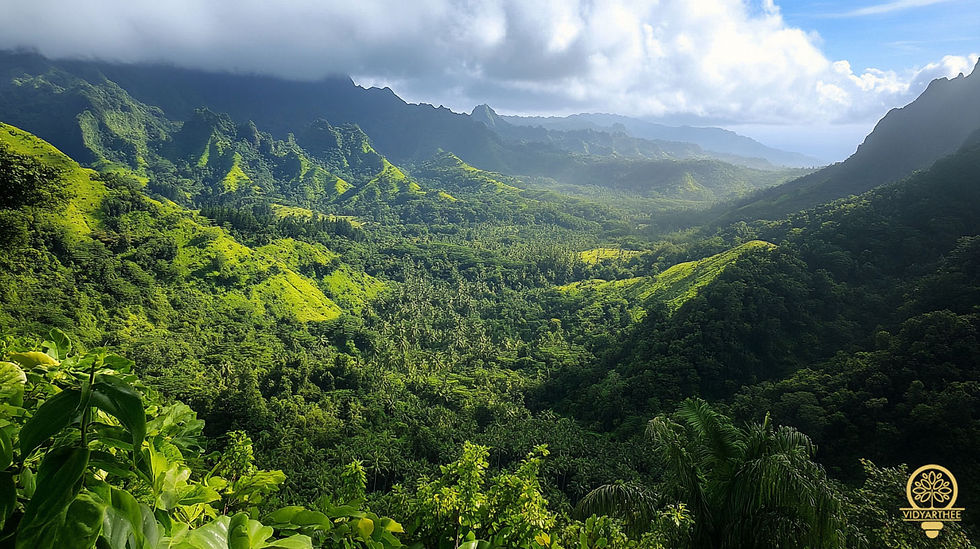
India recently showcased the Aravalli Green Wall Project at the 16th Conference of Parties (CoP-16), emphasizing its commitment to combating land degradation and enhancing biodiversity. This ambitious project focuses on ecological restoration in one of the world's oldest mountain systems—the Aravalli Hills.
Aravalli Green Wall Project
Objective:
The project, launched by the Ministry of Environment, Forest and Climate Change (MoEFCC), aims to green a 5-km buffer zone around the Aravalli Hill Range. It spans across Haryana, Rajasthan, Gujarat, and Delhi, restoring degraded forest lands and improving the ecological balance.
Inspiration:
The initiative draws inspiration from Africa’s Great Green Wall, which focuses on combating desertification and fostering sustainable land use.
Focus Areas:
Afforestation and reforestation in degraded zones.
Promotion of sustainable agroforestry.
Establishing green corridors to enhance biodiversity.
The Aravalli Range: A Natural Marvel
The Aravalli Hills are a geological wonder and hold significant ecological, cultural, and historical value.

Geographical Highlights:
One of the Oldest Fold Mountain Systems: These hills have eroded over time, showcasing a rugged terrain.
Location: They form the western and northwestern margins of the Peninsular Plateau, stretching across Rajasthan, Haryana, Gujarat, and Delhi.
Highest Peak: Guru Shikhar in Rajasthan, standing tall at 1,722 meters, is the highest point in the Aravalli Range.
Ecological Importance:
Acts as a natural barrier to the expansion of the Thar Desert.
Supports diverse flora and fauna, including many endemic species.
Regulates groundwater recharge and maintains ecological balance.
Significance of the Aravalli Green Wall Project
Combatting Land Degradation:
Restores eroded lands and mitigates desertification.
Strengthens India’s efforts under the UN Convention to Combat Desertification (UNCCD).
Climate Resilience:
Enhances carbon sequestration through afforestation.
Contributes to achieving India’s Nationally Determined Contributions (NDCs) under the Paris Agreement.
Biodiversity Conservation:
Preserves endemic species and wildlife habitats.
Improves green corridors for better ecological connectivity.
Community Participation:
Involves local communities in sustainable practices like agroforestry and eco-tourism.
Promotes livelihood opportunities through afforestation initiatives.
Challenges and Way Forward
Challenges:
Anthropogenic Pressures: Rapid urbanization and mining activities threaten the fragile ecosystem.
Water Scarcity: Arid conditions and declining water tables hinder restoration efforts.
Way Forward:
Strengthen implementation with adequate funding and technological interventions.
Foster multi-stakeholder participation, including public-private partnerships.
Enhance monitoring mechanisms to track progress and address challenges proactively.
Relevance for UPSC Aspirants
Aspirants should understand the Aravalli Green Wall Project in the context of ecological conservation, sustainable development, and climate change mitigation. Key topics include:
India’s initiatives under the UNCCD and Paris Agreement.
Geographical features and ecological significance of the Aravalli Range.
Role of community participation in environmental sustainability.
Practice Question
Consider the following statements regarding the Aravalli Green Wall Project:
It aims to green a 10-km buffer area around the Aravalli Hill Range in India.
The project is inspired by Africa’s Great Green Wall initiative.
Guru Shikhar is the highest point in the Aravalli Range, located in Gujarat.
Which of the statements given above is/are correct?
(a) 1 and 2 only
(b) 2 only
(c) 2 and 3 only
(d) 1, 2, and 3

Comments